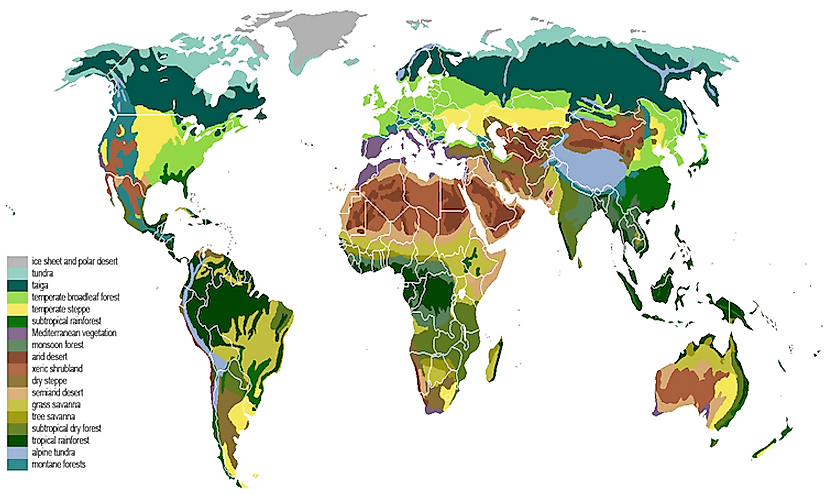What Is A Biome?

Biomes can be regarded as distinct biological communities that have resulted from a response to a shared physical climate. Biome, as a concept, was popularized between 1964 and 1974 by the International Biological Program based on the previous works of plant ecologist Frederick E. Clements and botanist Arthur Tansley.
Description
A biome is a vast ecological region on the earth’s surface, containing distinct flora and fauna which have adapted to its environment. Although a biome is different from an ecosystem, it resembles an ecosystem in various ways and can contain several ecosystems. Biomes are especially useful to divide the earth’s surface by several factors such as climatic patterns, flora, and fauna present, type of soil, vegetation, relief, and geology. Biomes are not constant, and rather they are subject to climate changes. There are not always well-defined boundaries between Biomes, and sometimes transition zones between different Biomes are present.
Characteristics Of Biomes
Biomes are differentiated from ecosystems and biological communities by some characteristics. First, Biomes spans across extensive and separate geographical regions such as different continents, provided environmental conditions are similar. Flora and fauna of a Biome are often the same regardless of the region. A Biome represents an intricate system of interactions between flora and fauna and their environment, such that the elements depend on, either directly or indirectly, on each other for survival. Animals and plants in similar Biomes have undergone similar adaptation processes independently.
Types Of Biomes
Biomes are broadly classified as:
Forest Biome- this Biome is characterized by trees which provide habitat for flora and fauna. The Biome is further divided into the types of trees, climate, and fauna. Subdivisions in this Biome include Temperate Biome, Rainforest Biome, and Alpine Biome.
Desert Biome- this Biome is characterized by little vegetation, unavailability of water and extreme climatic conditions. There are dry deserts and cold deserts, which have hot and cold weather respectively.
Aquatic Biome- this Biome covers both freshwater and saltwater water bodies. This Biome has numerous subdivisions including lentic Biome, which includes areas with still waters such as lakes and ponds. A lotic Biome, on the other hand, is not self-sustaining regarding fixed energy and relies on organic matter from the surrounding environment to sustain its fauna. Wetlands Biome occurs in shallow waters which have seasonal variations concerning water-depth and includes marshes and fens. Marine Biomes cover the open ocean while upwelling regions are relatively deep and rich in nutrients. Other Aquatic Biomes includes continental shelves and estuaries.
Tundra- Tundra Biomes are characterized by extreme cold conditions. Tree growth in this Biome is hampered by low temperatures and it is thus characterized by dwarf shrubs and sedges and an undergrowth of lichens, grasses, and mosses.
Grassland Biome- this Biome supports various grasses and has pronounced dry seasons. Lack of abundant rainfall and fires prevent trees from growing. Grassland is divided into temperate and savanna grasslands.
Importance Of Biomes
Biomes are critical in the sustenance of both flora and fauna. Over the past decades, human activities have altered the ecological balance in most of the earth’s Biomes. The conservation of Biomes is a major factor in mitigating the effects of climate change and in restoring endangered plants and animals. Biomes present scientists with an easier way of studying the large planet that is earth and the inter-relationships between plants and animals.











